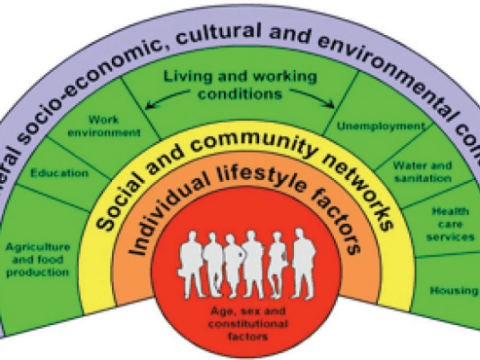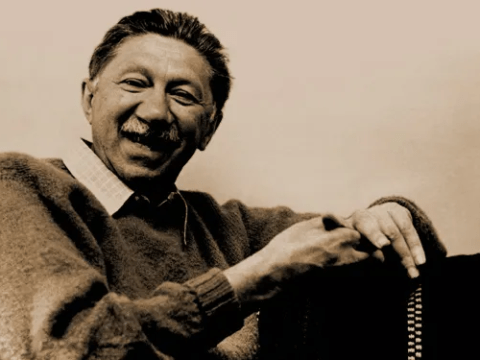Those who know public health know Prof. Irving Zola‘s “upstream vs downstream” parable.
Irving Zola is a medical sociologist. His friend, John McKinlay, describes Zola’s parable in his 2019 article, “A case for re-focusing upstream: The political economy of illness”1.
The “Upstream boat” sails through this upstream path.
Following is the reproduction of the parable;
” I am standing by the shore of a swiftly flowing river, and I hear the cry of a drowning man.
So,
I jump into the river,
put my arms around him,
pull him to shore,
and apply artificial respiration.
When he begins to breathe, there is another cry for help.
So,
I jump into the river, reach him, pull him to shore, apply artificial respiration,
and,
then just as he begins to breathe, another cry for help.
So back into the river again;
another cry!
Again and again,
without end,
goes the sequence.
You know, I am so busy jumping in,
pulling them to shore,
doing the same,
that I have no time to see,
who the hell is upstream pushing them all in”.
This public health metaphor forces us to think about the highest-impact interventions. It becomes an effective tool within the Social Determinants of Health framework.
Graphical presentations of Zola’s parable
Progressive organizations employ this parable to make their mission clearer to everyone. Following are two examples of such graphics;
Sudbury and Districts Public Health in Ontario, Canada
The following graphic appears on the website, which belongs to the public health Sudbury and Districts in the Ontario province. It vividly explains Zola’s parable.

Source: Sudbury and Districts public health
National Collaborating Center for Determinants of Health (NCCDH)

The above NCCDH infographic travels a little further; It divides the stream into three;
- Downstream
- Midstream
- Upstream
Stream-specific interventions
Downstream interventions
Let us begin with downstream determinants and their interventions.
According to Zola’s parable, he saves lives one by one.
So, the focus is on the individual – one unit. We can add one family also here.
We create strong scaffolds to save individuals from drowning.
It requires a lot of resources to search and bring those in danger to the shore.
Let us apply the metaphor in a healthcare setting.
Treating patients at hospitals and clinics is a typical downstream activity.
it is essential.
But,
We strive here to change the effects of the causes:
- by treating an illness, screening for it etc.
Most of the healthcare budget is spent on such activities:
To improve service delivery and equitable access to services.
However,
These efforts do not remove the causes that fall them into the water.
We can identify downstream health promotion programs as well.
Typical popular downstream health promotion programs are health screening programs such as breast cancer screening.
Midstream interventions
The midstream approaches focus on improving working and living conditions and promoting healthy behaviours.
It deals with traditional social determinants of health.
According to the NCCDH, these changes occur at local, community and organizational levels.
Unlike in the downstream interventions,
here we attempt to change the causes of illnesses.
Upstream interventions
In contrast to the above two,
the upstream interventions create positive environments that impact midstream and downstream conditions and interventions.
Without upstream approaches, other interventions become unsustainable.
These types of interventions either change or reform macro-level national and global policies.
In other words,
the upstream interventions address “causes of the causes” and are also called “structural determinants of health”.
It is also called social determinants of health equity”.
These approaches focus on social forces and aim for system changes.
With the help of Irving Zola’s river story parable, we can visualize the causes, causes of the causes, and the appropriate best return of investments.
Classic examples of midstream and upstream interventions
- Safe Neighborhoods Initiative:
- This initiative aims to create safe and healthy environments in urban areas by addressing the social and economic determinants of health.
- It involves partnerships between local governments, community organizations, and public health agencies to address social problems such as crime, poverty, and lack of access to healthy food.
- Health Promoting Schools:
- The Health Promoting Schools initiative is a classic upstream health promotion intervention that focuses on improving the health and well-being of school-aged children.
- This initiative promotes healthy behaviours and environments by integrating health education into the school curriculum, promoting physical activity, and providing healthy food options.
- Housing for Health Program:
- The Housing for Health program is an upstream health promotion intervention that addresses the relationship between housing and health.
- This program provides low-income families with safe, affordable, and healthy housing options, which may impact health outcomes, such as reducing exposure to environmental toxins and improving access to healthcare services.
- Walkable Communities Initiative:
- The Walkable Communities Initiative is an upstream health promotion intervention that aims to improve the health of communities by promoting walking and active transportation.
- This initiative focuses on creating walkable environments, such as sidewalks, bike lanes, and green spaces, which can encourage physical activity and improve health outcomes.
- It has been implemented in cities across the world, including London, Paris, and Melbourne.
Modern upstream parable:
The University of Delaware has extended Zola’s parable to capture the health equity concepts.
This is because the original parable does not capture well the inequity concept which refers to that some groups fall more into the river than others.
So, the upstream story continues;
“As you look farther upstream, you notice bridges at various states of repair along the river.
Some are strong and made up of sturdy components.
Others are weak and debilitated with missing boards and flimsy railings.
Most people who fall into the river cross the poorly-made bridges,
while those who live near or cross well-built, protected bridges are protected”.
This is an excellent extension of Zola’s original story.
References
- John B McKinlay (2019): A Case of Re-focusing Upstream: The Political Economy of Illness; IAPHS Occasional Classics, November 19 2019; https://iaphs.org/wp-content/uploads/2019/11/IAPHS-McKinlay-Article.pdf



